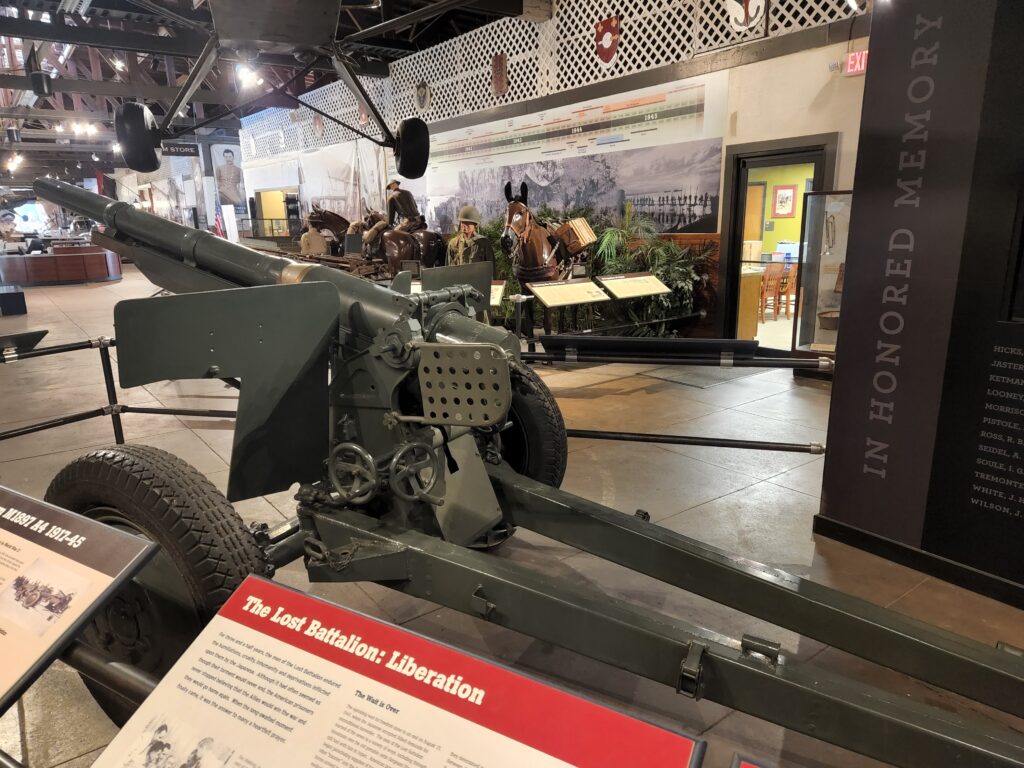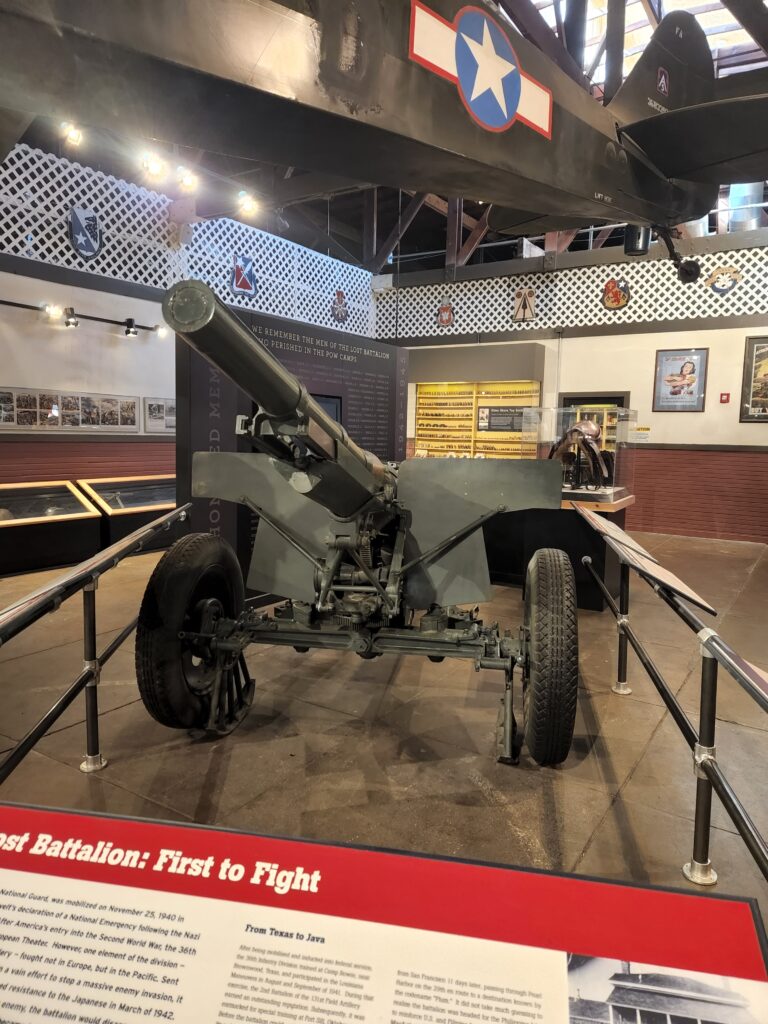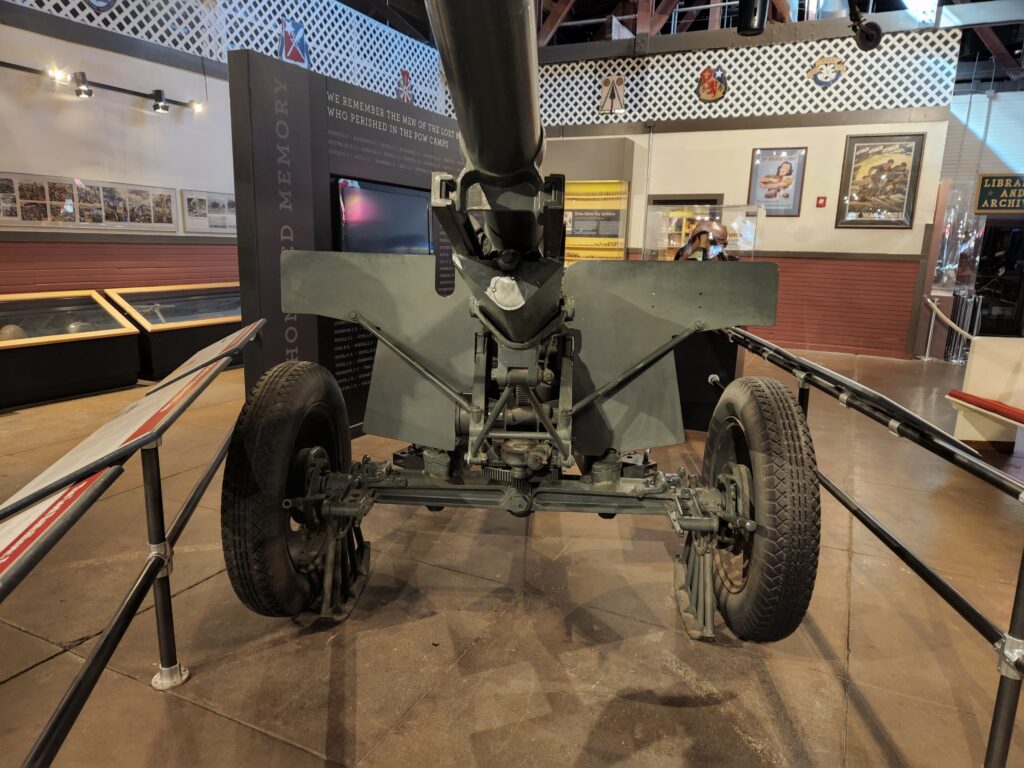It is a standing tradition in the US military that as progress is made and weaponry improved, the various systems are not junked but handed down to the Reserves and National Guard. When and if those units are activated, they may have their items up-graded to the level of the Active Force or they may deploy as is. The latter was the case with the 2/131. They had trained on the M1897 75mm Artillery pieces, that were US manufactured but based on a French design dating back before WW1.
https://en.wikipedia.org/wiki/Canon_de_75_mod%C3%A8le_1897#World_War_II_service
While old, these cannons were not necessarily obsolete. In fact, the 75 mm cannon was a mainstay for the US military throughout WW2. It was mounted on all of the tanks used by the US ARMY early in the war. It was replaced with a 76mm version in later models of the Sherman tank.
The M1897 was a standard issue Field Artillery piece. There were a number of other versions, such as a mountain gun with a lighter, small carriage to make it more portable.
https://en.wikipedia.org/wiki/75mm_gun_M2%E2%80%93M6
So apparently the 2/131 arrived in Java with two different configurations of the M1897. The older one that they had trained on in Texas was known as a box-tail. It had originally been designed to be towed by horses in WW1. Seemingly during the stop over at Pearl Harbor where they were issued their first ammunition, they also received the split-tail version that was meant to be towed by a truck. The business end of these weapons remained more or less the same.
While old, the M1897 was still quite an effective weapon. But the end of the war, the 75mm artillery systems had been largely replace by the 105mm cannon that still serves today and was perhaps the most frequently seen / used cannon during the Vietnam Era.
It is also of note that some of the 2/131 men describe having been issued WW1-era Springfield rifles at Hawaii. To a man that say they had never seen, much less fired, one. Fortunately, they were never called upon to use that weapon in combat. They all continued to carry one for personal defense until their capture. Of course, a few of the enlisted men and all of the officers carried the iconic US 45 caliber Colt M1911 hand gun.
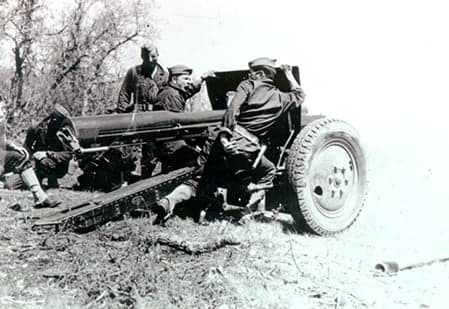
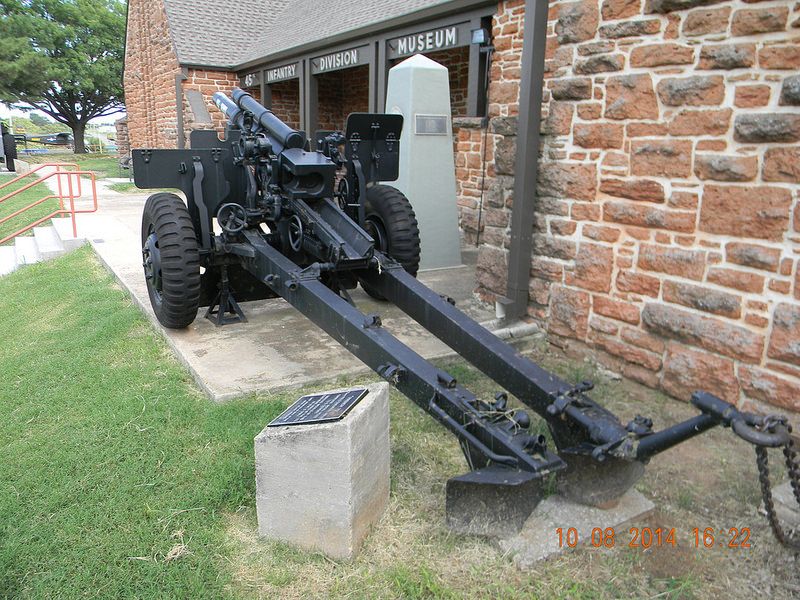
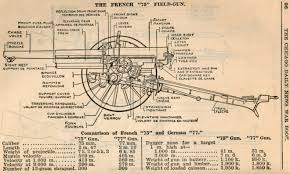
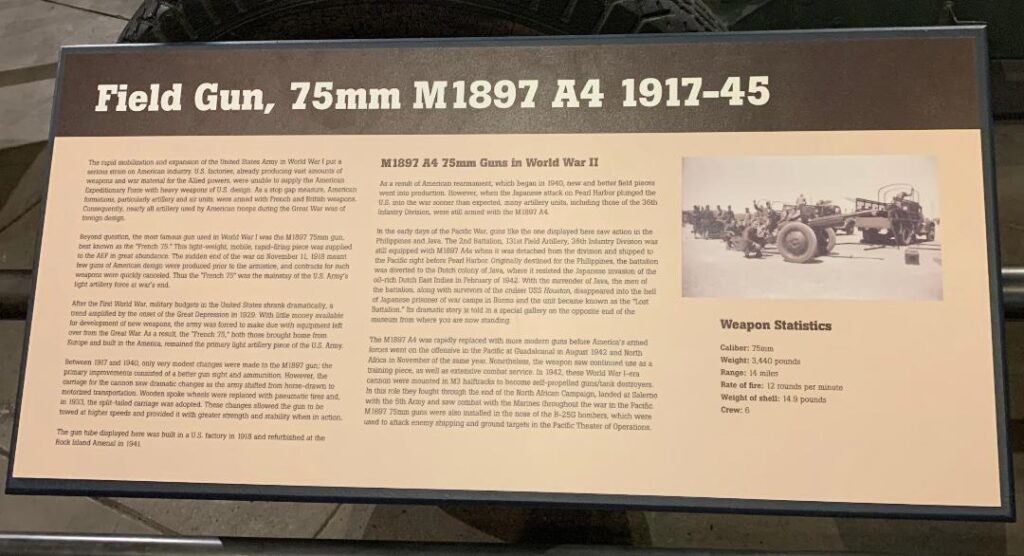
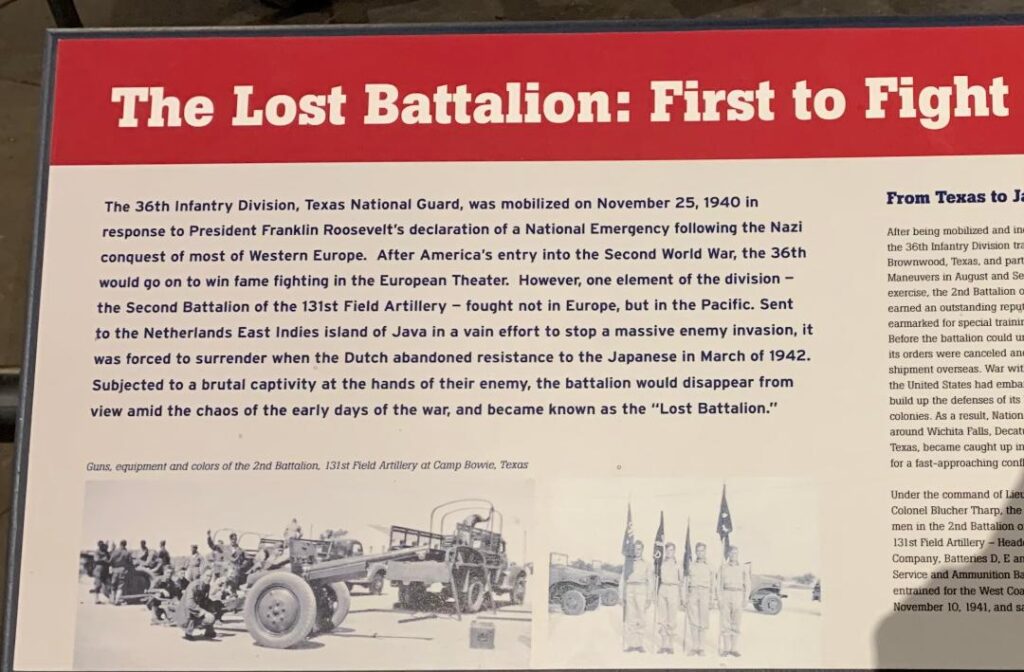
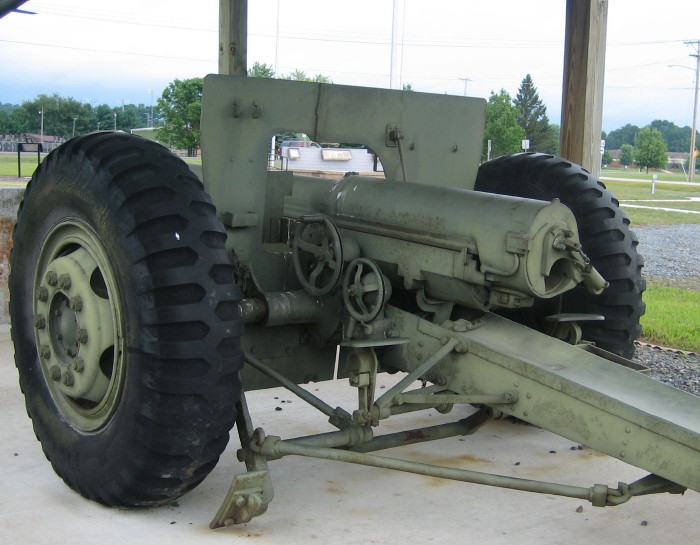
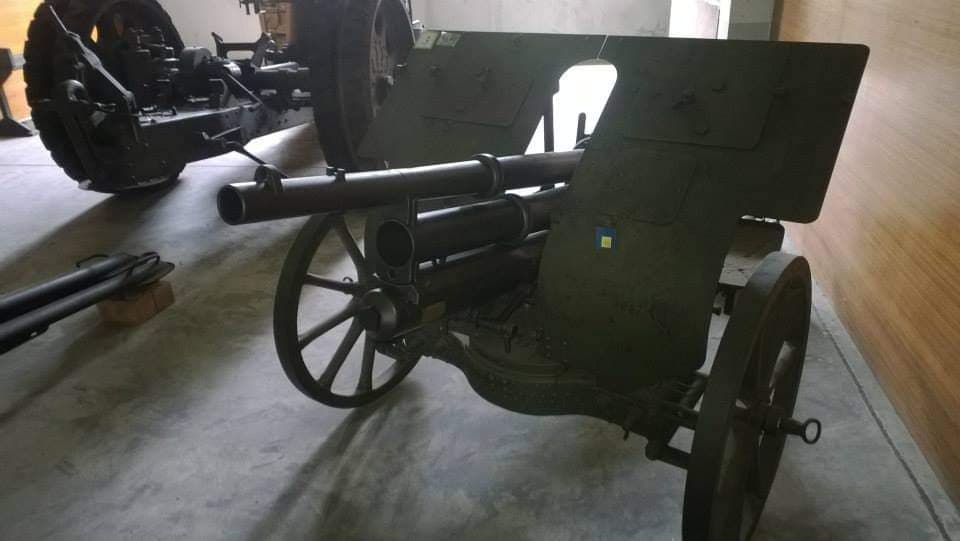
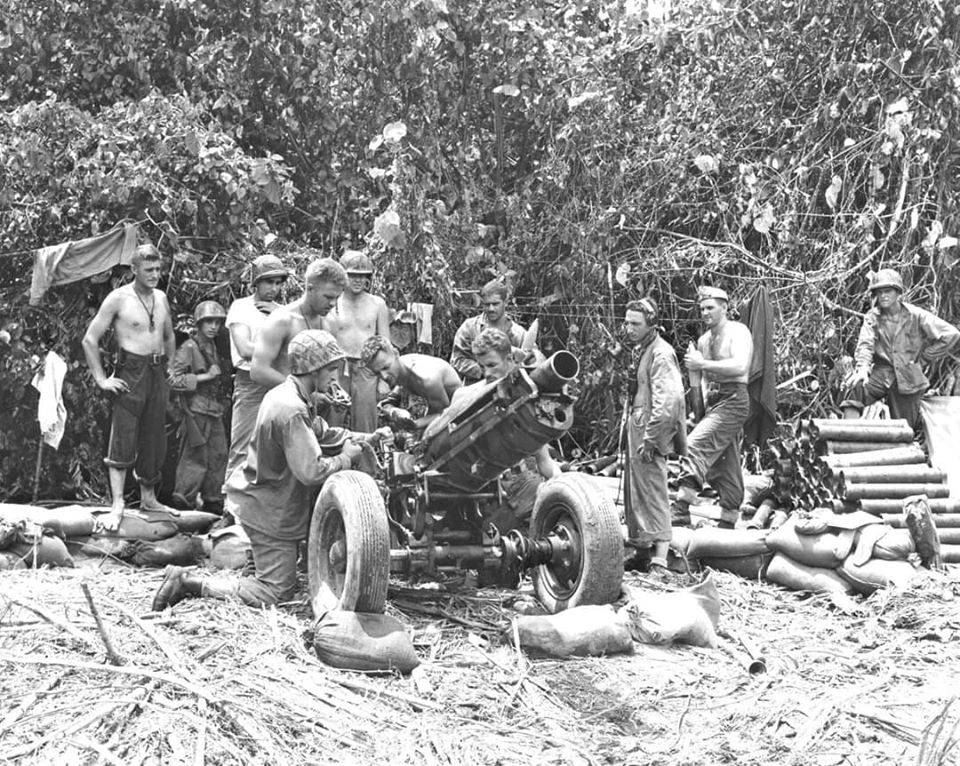
These are not precisely the 75mm cannon models that the 2/131 had but another version:
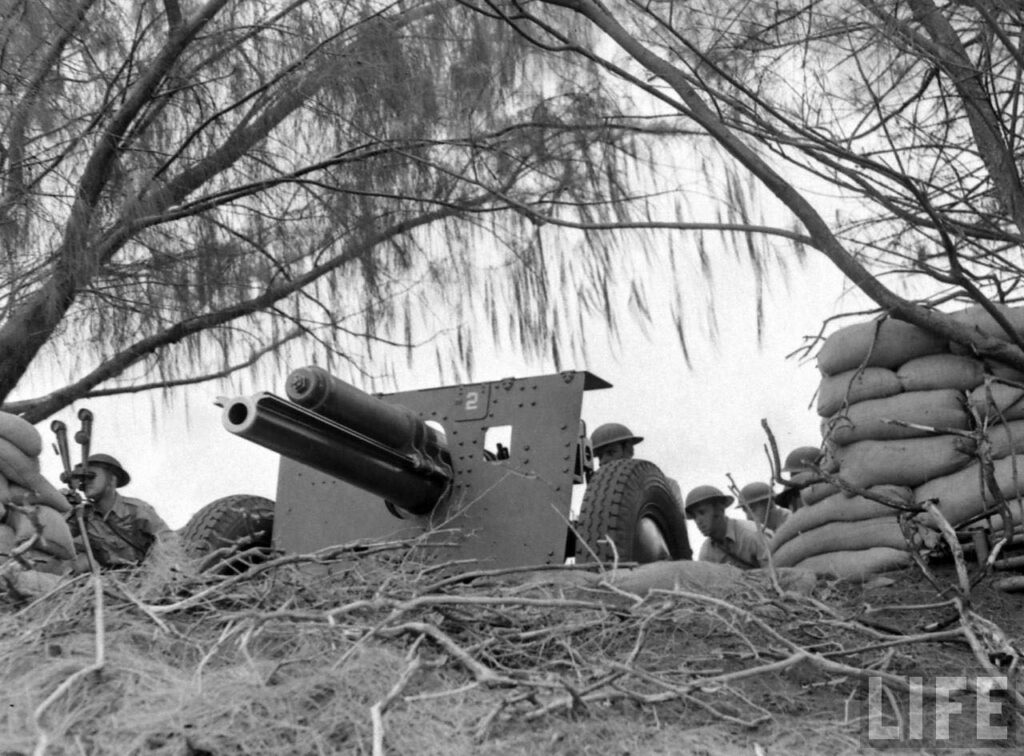
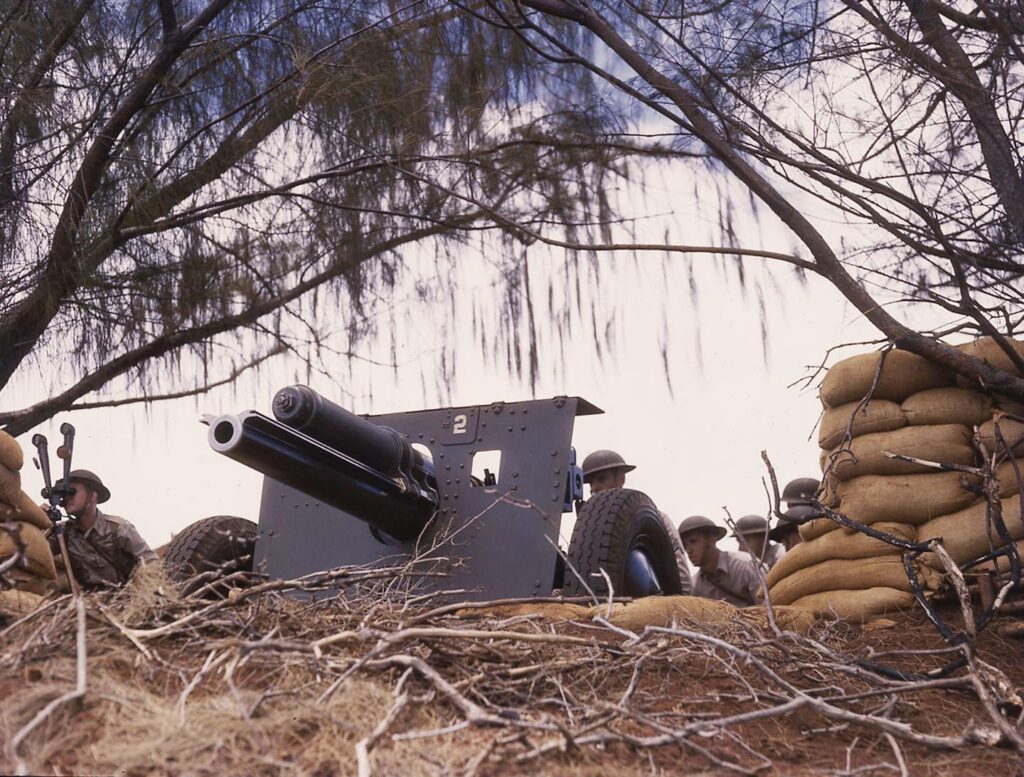
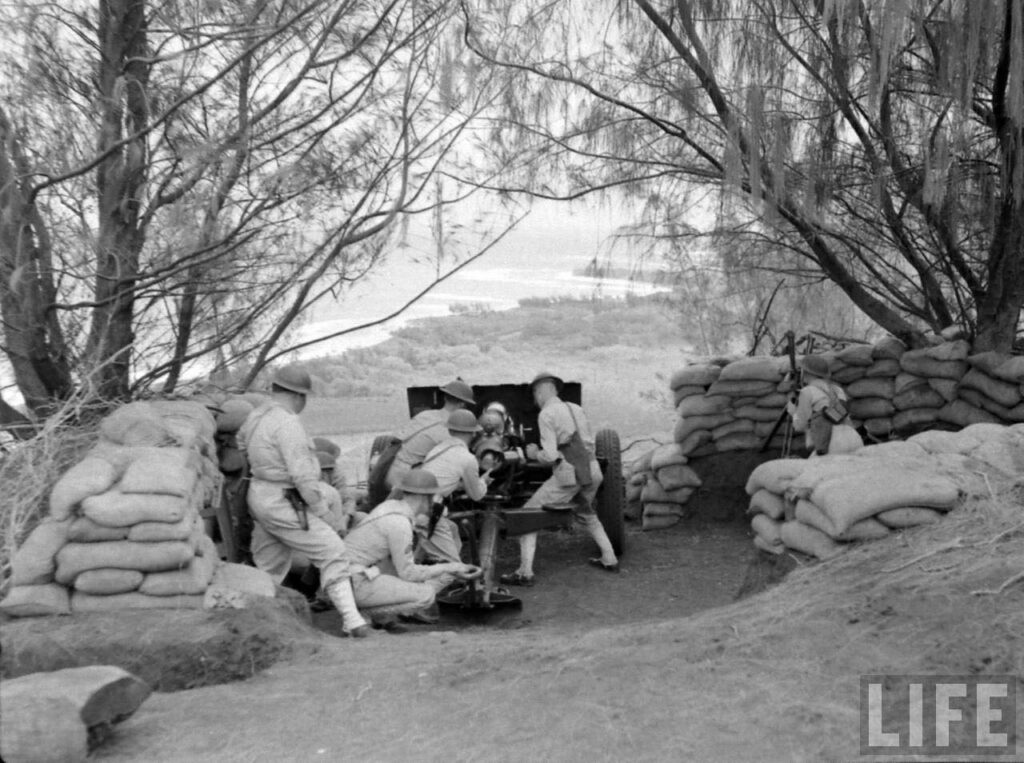
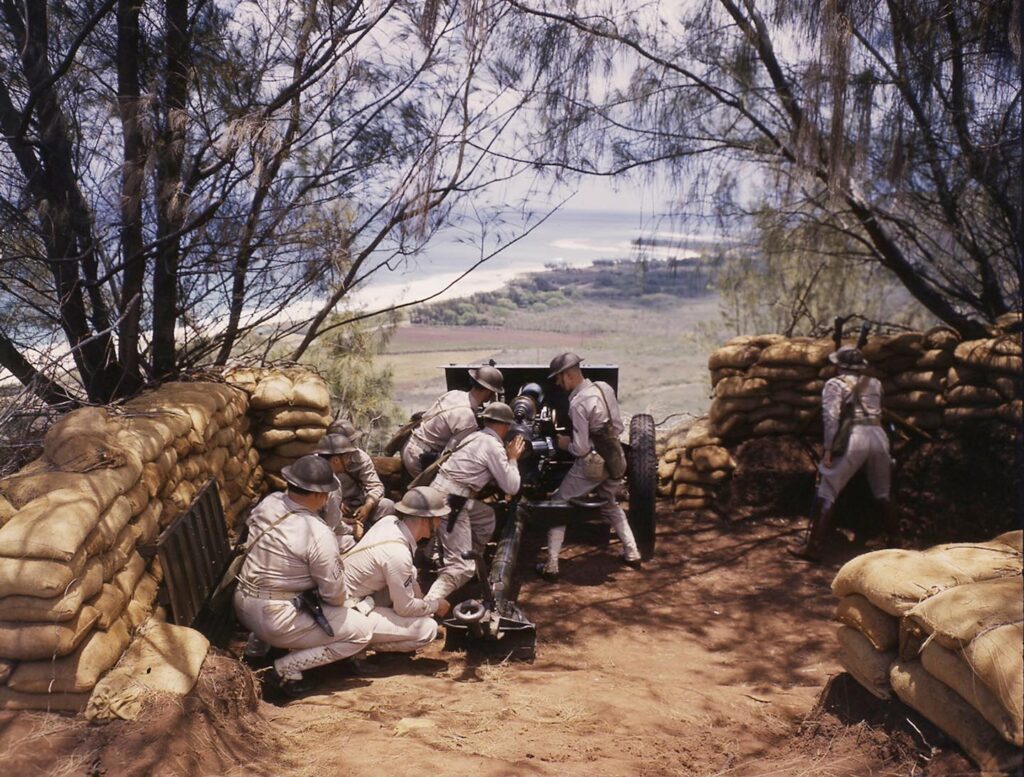
A few of the POWs mention that at Hawaii they loaded more modern 105mm cannons as well as newer (split tailed) 75mm guns. The latter are well documented as being used to fire upon the attacking planes at Singosari, but the former are not mentioned thereafter. It is possible, but unconfirmed, that E Battery fought at Surabaja with the 105s. These also may have been the property of the 26th FA Brigade that landed in Java with the 2/131. We just have no records.
The TEXAS NAT’L GUARD Museum at Camp Mabry in Austin TX has a display of a 75mm cannon (split-tail) from the same era as that used by the 2/131:
